blog

Exploring wrecks in the Gulf of Finland
It’s been a busy summer for the Badewanne diving team. The Finnish group of underwater explorers have dived a number of deep wrecks in the Gulf of Finland from the first and second world wars and also discovered an unnamed wreck from the 19th century. In this team report they give the lowdown on their finds so far: Operating from the Estonian and Finnish side, we have made dives during which history has again revealed itself before our eyes.Near Osmussaar Island, Estonia we visited the wreck of Russian mineship Yenisei, another victim of victorious U26 from summer of 1915. The mighty ironclad rests on the seabed at 45 m listing to port, with the Obuhov cannons in their casemate stations defiantly pointing towards the green light above.
U 479 lies at a depth of 95 m. ©Badewanne.fi
Next we headed out further into central Gulf of Finland and revisited the wreck of WW2 era wreck U 479. She rests on the seabed at 95 m after hitting a mine in the late fall of 1944. Dropping down through the water, we can see that the water is very layered, and eventually pass through the halocline at 75 m. There is a distinct boundary layer where water is optically distorted as we enter the more saline deepwater. Visibility at the wreck is good, and we utilize our short bottom time to shoot video of this uniquely well preserved WW2 U-boat wreck. Continuing our journey through time, we dived another deep wreck, a WW2 “Torpedoboot” T18. It wasn’t a small “motor torpedo boat”, as many would think about, but in German classification it’s a 900 ton small destroyer of “Torpedoboot 37” class. The wreck is broken in the middle, laying at almost 100 m. Visibility is very good, and we obtain a good series of still images before undertaking the ascent, and the subsequent and inevitable almost three hours of decompression.
The Torpedo boat T18. ©badewanne.fiNext we move back to Finnish side, and establish our base on Hanko peninsula at Tvärminne Zoological Station, a scientific facility operated by University of Helsinki. From Tvärminne we again head out to the mouth of Gulf of Finland. We visit the wreck of U26, vanquisher of Pallada and Yenisei before her own fate in the fall of 1915. This wreck is very tricky to dive as it’s in a very busy location on the westbound shipping lane. Cooperation with maritime traffic controllers, Helsinki Traffic and Tallin Traffic is essential for safe and successful diving. We shoot video and stills for our documentary purposes, before we leave the U26 to her rest, which has lasted for 100 years this year.
The wreck of the Yenisei, sunk by U26. ©badewanne.fi Next target is something we don’t know – something that according to sonar images could be even a submarine. However, when we drop through 75 m of water, we arrive at a wreck of a mail ship from the 19thcentury. Her bows are buried in the glacial clay, and deck cabins have suffered from inevitable trawl damage, but it can be clearly seen that this ship has transported mail – and people. Fancy cast-iron lattice in railings, beautifully crafted wooden benches can be seen on upper deck, together with the ships’ wheel still standing, and the engine telegram and compass bowl on the deck. The identity of the ship is yet unknown.
Further out, during a lucky weather break, we again drop down to wreck at 80 m looking for a real “motor torpedo boat”. This turned out to be German Kriegsmarine Schnellboot S106 from the WW2 era, as we hoped. She’s broken in two by a mine explosion, but in very good condition. This is another new discovery, which adds a significant piece into the puzzle of naval warfare in the Gulf of Finland during WW2. After shooting images we again undertake the long ascent towards the green light.
Kriegsmarine Schnellboot S106 ©badewanne.fi These are some impressions from our expedition this summer. However, there are still many weekends left of the diving season. Stay tuned, we may bring you more interesting stuff before the winter closes in! For more info on the Badewanne team, head over to their website.

The world champion free-diver’s plastic obsession
When you imagine Caribbean islands, images of unsullied golden beaches come to mind. But out-of-control plastic pollution means this isn’t always the reality. Suunto ambassador and world champion free diver William Trubridge is on a mission to change this.
When William Trubridge first moved to the Bahamas for free diving, he found himself developing an unexpected obsession. To his surprise a near carpet of plastic pollution covered some of the beaches on Long Island, the location of Dean’s Blue Hole where Will regularly trains.
Will tries to keep one or two beaches clean. © Willian Trubridge“I just couldn't help myself from at least collecting a few bags of it and then once I started doing that it almost became an obsession or an OCD (Obsession Compulsive Disorder) thing,” Will says. “It's difficult to find time to clean the beach regularly, but we do organize clean ups to keep at least one or two beaches tidy.” Will teaches free diving on the island at his Vertical Blue School and does plastic clean ups with his students. He says they are always shocked by the huge amount of plastic on the beaches.
Will's students always fill bags and bags with plastic. © Willian Trubridge“It's impossible to be a person who really enjoys free diving and not be affected by the sight of all the plastic,” he says. “One of the reasons I promote free diving and enjoy teaching people is because I know strengthening their contact and bond with the sea will change their behavior and make them more aware of this issue.” However, clean ups barely scratch the surface of the problem, Will says, so he began researching the issue more closely. During the clean ups he noticed one of the most common types of plastic trash he was collecting were small plastic sachets. They are used to hold 250 to 300 ml of drinking water and are sold in poorer countries such as Haiti and the Dominican Republic. “People chew off a corner from the bag and slurp the water into their mouths,” Will says. “They then get thrown on the road or off a boat and one way or another they end up in the sea. “Probably more than half of the plastic washing up is these little bags. There's millions and millions of them.”
It's impossible to be a free diver and not care about this issue, says Will. © Willian TrubridgeWill began looking into solutions and tried to find alternatives. He found companies that manufacture biodegradable plastic substitutes, but none can hold drinking water without biodegrading. “My latest idea is to try and crowd source enough money to supply most families in Haiti with one big five gallon jug each so they can then refill them with water rather than buying sachets,” Will says. “The problem is these families don't have the free cash to even put a deposit down on one so they just go for the easy option and buy the sachets for a few cents.” The next step, Will says, is to find people within Haiti and the Dominican Republic who could help organize the project once funds have been raised.

Competition Freediving: the secret to doing well
Will Trubridge explains the importance of psychological strength in freediving competitions – and why having a poker face is a very useful skill. To the observer, freediving is all about serenity and calmness – a peaceful interaction with the underwater world. It is exactly all these things, which is why competition freediving presents such a unique challenge, says Will Trubridge.
“The conditions of a competition are slightly different to a world record attempt. In a competition you have an official preset time and there's a lot more people around – spectators and media. It's not as controllable as with a world record attempt,” he says.
Trubridge surfaces after a competition dive at Dean's Blue Hole ©zooom.at/Samo VidicThe key ingredient to success is to be relaxed he says, which is much harder to achieve in the contest environment. “With other sports you can use the nerves and the anxiety which generates adrenalin to your advantage. In freediving it's completely detrimental.”The reason for this is the affect it has on heart rate. Stress and anxiety raises the heart rate. To be successful, freedivers need to have the lowest pulse possible to conserve oxygen. Trubridge is currently preparing for the AIDA Apnea Depth World Championship in Cyprus this September after a successful spring in which he won all titles and set a new competition No Fins personal best (PB) of 98m in Colombia. He says he’s getting better at handling the stresses of contests.
“I’m feeling really motivated for [Cyprus]. The lesson I've been learning a lot this year is the importance of being patient and taking my time and not feeling obliged to do a dive.”He also says that mind games play a part. When going for a world record or when competing at his own Suunto Vertical Blue contest, a freediver can have multiple attempts over several days. But in the world champs, they get just one chance. And that involves some psychological battles. “You announce your dive on that day. If something goes wrong, then you don't have a second chance. It creates more of an element of chance. There is also a lot of sleuthing and spying to find out what other freedivers have done in their training to gauge how they're performing, and using that information to make pronouncements.”
Watch as Will Trubridge attempts to break his own 102m record.
He says that if he underestimates a competitor’s ability and sets himself a target that’s too low, he risks losing, but set the target too high and the risk is to over-stretch and fail. “It creates an element of a poker game in the announcements themselves!” he adds. Trubridge says he’s can’t wait for the contest to begin. “I've never been to Cyprus. My goals are to do well in all three disciplines. I have the world records in no fins and free immersion. I would like to do my best at winning gold in those two disciplines and do as best as I can in constant weight.”We wish him the best of luck.

Divers retrieve a piece of WWII history
Suunto ambassador and underwater explorer Jill Heinerth documented a sensitive dive mission to recover an important piece of history.
A dive team successfully retrieved the sextant from a WWII wreck and have delivered it to a Newfoundland museum for posterity.
Diver Luc Michel discovered the sextant last year.
Suunto ambassador Jill Heinerth documented the dive and says it was a “huge privilege” being part of the team.
“The fear was that if left in place, in the open, underwater, [the sextant] would disappear into somebody's private collection which is not just illegal, but also a loss of cultural history,” Jill says. “Sharing the history and ensuring the safety of this important artifact for the museum was a huge privilege.”
Meet Jill face-to-face in episode 7 of the #SuuntoAdventure video series
The recovered sextant is being restored before being displayed at Newfoundland museum.
The sextant belonged to the SS Rose Castle, a steam merchant ship, that a German U-Boat sank during WWII while it was anchored at Bell Island, off the coast of Newfoundland. Iron ore mines on Bell Island supplied Cape Breton's steel mills, which accounted for one-third of Canada's steel production. Seeking to disrupt production, the German U-Boat entered the harbor at 3am one morning in September 1942 and sank the SS Castle Rose with two torpedoes before sinking French vessel PLM 27 and escaping into the darkness. The Castle Rose took 28 crewmembers down with her, five who were Newfoundlanders.
“We dive with great reverence, understanding that this site is essentially a war grave,” Jill says. “The many men who died were never expecting to be targets of the war and within site of some of their homes.”
The SS Lord Strathcona was also sunk in 1942. Above, divers explore its wreck.
Diver Luc Michel, from St. Pierre et Miquelon of Newfoundland, located the sextant last year. After restoration, the sextant will be displayed at The Rooms, a Newfoundland cultural center and museum.
Click here to read about Jill's journey as an underwater explorer.
Face to Face with Jill Heinerth, #SuuntoAdventure Video Series Episode 7
In this seventh installment of the #SuuntoAdventure Video Series you will meet inspiring underwater explorer Jill Heinerth.
“You can’t always say how to solve a really, really big problem, but you usually know what the next best step is,” the optimistic Canadian says. Read more about Jill here.
Face to Face with Jill Heinerth, #SuuntoAdventure Video Series Episode 7
Watch also the other episodes in the series:
Face to Face with Emelie Forsberg – #SuuntoAdventure Video Series, Episode 1
Face to Face with Greg Hill – #SuuntoAdventure Video Series, Episode 2
Face to Face with Kilian Jornet – #SuuntoAdventure Video Series, Episode 3
Face to Face with William Trubridge – #SuuntoAdventure Video Series, Episode 4
Face to Face with Conrad Stoltz – #SuuntoAdventure Video Series, Episode 5
Face to Face with Ueli Steck – #SuuntoAdventure Video Series, Episode 6
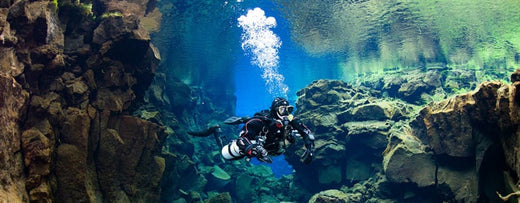
UNDERWATER EXPLORER
“Some people are repelled by the darkness of an underwater cave, but for me it’s an invitation into the unknown,” says Suunto Ambassador Jill Heinerth. Heinerth is a pioneering underwater explorer and filmmaker, leading technical diver, and world expert in rebreather technology.
Her love of the water began as a child and has persisted ever since. As a teen, Jill Heinerth was a volunteer swim instructor and lifeguard at her local swimming pool. Jacques Cousteau was her hero and by the age of 16 she was scuba diving.
Now, after more than a 20-year career, the Canadian underwater explorer and award-winning filmmaker has crossed the globe, diving in what she calls ‘the veins of mother earth’. Jill has dived deeper into the planet than any woman in history and seen some extraordinary places. She’s dived caves underneath the remote Ural mountains of Siberia, tickled the bellies of manatees near the Gulf of Mexico and explored sacred desert springs in Africa. In 2000, she was involved in one of her most ambitious projects to date — to dive inside a giant iceberg. In 2014 she was awarded the inaugural Sir Christopher Ondaatje Medal for Exploration by the Royal Canadian Geographical Society.
Jill is also a journalist and champion for women divers. She wrote a book called Women Underwater and in 2016 is part of a team of 10 women on an epic three-month journey, snorkeling more than 3000 km through frigid Arctic seas. “Some would suggest that exploration on this planet is done, but I disagree,” says Heinerth. “We know more about space than we do about our oceans and our underwater caves.”
Her abiding love of the ocean and watery places has also transformed her into a strong advocate for water conservation and protection, via her We Are Water Project. This important cause aims to raise awareness about global water issues, and encourage people to do more to protect our fresh water resources. Jill cycled across Canada, raising awareness along the way. With the same goal in mind, she wrote a fun children’s book about an itchy manatee that has an important message about water pollution.
Naturally, Suunto is the first choice of dive computer for Heinerth: “I’ve been using Suunto for a long time, and I think they represent the pinnacle of fine quality. The precise instruments and the ruggedness of the equipment have served me very well in some extreme diving expeditions over the years.”
She adds: “The Suunto DX is the key support device that serves as a backup for my rebreather. It’s easy to integrate it into a CCR dive plan, or any plan for that matter – open circuit or closed circuit. It also contains a very accurate digital compass, which I use to survey and make maps of new exploration.”

-111 m beneath the ice
After eight months exploring Greenland, members of the Under the Pole team push their ice diving limits to new depths.
The descent was five-minutes only, but the small hole dug in the ice 111 m above would demand a two hour return trip – in sub-zero waters.
In the icy darkness 111 m below the surface and the rest of the Under the Pole team, Martin Mellet and Ghislain Bardout smiled at one another – they’d reached a difficult new “summit” together.
© Lucas Santucci/Under the Pole
Like ambitious alpinists trying to reach the next peak, they are always tempted to descend to the next “summit” below them. Unlike alpinism, however, deep sea diving has no ultimate summit to reach. The deeper you dive, Martin says, the more complicated the dive becomes while at the same time not satisfying the craving for an ultimate end point.
“This frustration is a powerful motivation for deep diving, but a dangerous one because you constantly need to control the urge to go further,” he says.
Only two things would ensure their safe return; their trust and confidence in each other and the thin lifeline leading them back to the hole in the ice ceiling. “We get in the water through a small hole in the ice, and this opening is our only way out,” Martin wrote after the dive. “If we lose track of the life line that connects us to the hole, things can only end in tragedy.”
© Lucas Santucci/Under the Pole
The visibility was poor when they began their descent, but their spirits were high. After eight months of hard work and diving together as part of the Under the Pole expedition, Martin and Ghislain had achieved a level of trust to make such a risky dive possible.
On their descent to 90 m, they had dove along a steep, reassuring cliff face. After that, the cliff ended and the vast ocean expanded before them. “Everything was calm and quiet, intensely exhilarating,” Ghislain says. “We dive because we want that moment when the unimportant just fades away and everything we feel is suddenly amplified by our heightened senses.”
© Lucas Santucci/Under the Pole
At 111 m they stopped and contemplated their surroundings and situation. Going further was unnecessary; they were already deep enough.
“Being there, 111 m below the sea ice and icebergs, is a big deal – at that extreme depth, our lives were pending,” Ghislain says. “Like an alpinist who has reached his summit, we had just reached ours and it was time to ascend.”
To avoid decompression, the return trip took two hours, with 1h 30 spent at 12 m and above. But this meant they could take their time on the way up and better enjoy the dark shapes of the huge icebergs above them.
“After a little more than two hours, we emerged from the hole one after the other and entered a different world where the team welcomed us with satisfying smiles, cake and hot tea,” Ghislain says.
© Lucas Santucci/Under the Pole
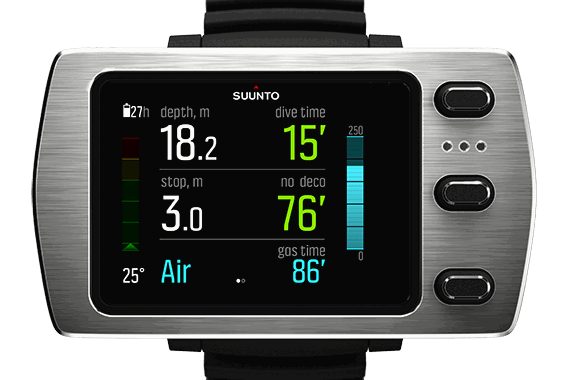
New features for the Suunto EON Steel now available
Software update brings gas time, CCR mode, real-time gas consumption and compass bearing lock.
Suunto EON Steel grows with you as your diving skills evolve, thanks to its customizability and durability. As communicated with its launch last fall, you can update the EON Steel software yourself. The update now coming out brings much sought after new features.
Gas time
The new gas time reading allows you to estimate how long you can continue diving, taking into account your current tank pressure value and breathing rate.
Rebreather mode
Closed-circuit rebreather (CCR) mode makes Suunto EON Steel a great backup dive computer on rebreather dives. Combined with the Suunto Fused™ RGBM, the CCR features give you extra confidence on your rebreather dives.
Gas consumption
A first for dive computers, Suunto EON Steel calculates real-time gas consumption. As you improve your diving skills, you’ll see your comfort level reflected in the rate: the more relaxed you are, the less gas you consume.
Compass bearing lock
The new compass bearing lock helps you orientate yourself underwater and ensure you maintain your direction of travel. For example, you can set a bearing lock for the direction to the reef before leaving the boat.
You can download the free update to your EON Steel through the Suunto DM5 software.
Check out more details about the Suunto EON Steel software update 1.1.
Face to Face with William Trubridge, #SuuntoAdventure Video Series Episode 4
It is time for the fourth episode of #SuuntoAdventure Video Series. Relax and get ready to dive deep with freediver William Trubridge!
William Trubridge is a world-renowned freediver who has a natural affinity with the depths. In 2010 he became the first person to break the 100m barrier completely unassisted and has broken several records after that as well.
Watch the other episodes in the series:
Face to Face with Emelie Forsberg – #SuuntoAdventure Video Series, Episode 1
Face to Face with Greg Hill – #SuuntoAdventure Video Series, Episode 2
Face to Face with Kilian Jornet – #SuuntoAdventure Video Series, Episode 3
Face to Face with Conrad Stoltz – #SuuntoAdventure Video Series, Episode 5

One with the ocean
“The appeal of freediving is how different it is to any other sport. The fact we’re completely immersed in liquid; a single breath, the weightlessness, the absence of sounds, the dullness of the colors... everything is subtracted,” says freediver William Trubridge.
"It’s a completely different experience to life in the air element. When I'm diving it feels like I'm being accepted into the ocean."
Trubridge, 35, is a multiple record-breaking freediver who has a natural affinity with the depths of the ocean. He is the first person to dive to 100 m without assistance.
The ocean and its depths are as much William Trubridge’s home as his life on land.
Born in Britain, the first few years of his life were a nomadic existence sailing around the world on his parents' yacht before the family settled in New Zealand. He learnt to swim at the age of 18 months, and was freediving to 15 m by the age of eight, competing with his older brother to see who could bring back a stone from the deepest depth. But it was not until he was 22 that he discovered freediving was a sport. Since then, Trubridge has broken numerous freediving records, including in 2010 becoming the first person to break the hectometer; diving to 100 m without assistance.
His immersion in the aquatic world has made protecting the ocean a lifelong passion for Trubridge. In 2015, he launched the Plastic Challenge, a global campaign to raise awareness about the problem of seaborne plastic pollution. The campaign motivated people all over the world to clean up their local beaches and waterways. Trubridge is also a vocal ambassador of a NABU International campaign to save the critically endangered Maui and Hector dolphins.
For much of the year he is based in the Bahamas, where he trains at Dean's Blue Hole, It is also the location of Suunto Vertical Blue, one of the largest freediving events in the world, which Trubridge organizes.
Although considered the world's best 'no-fins' freediver, Trubridge is also a multiple record holder in 'Free Immersion', where divers descend pulling on a rope. In 2011 and 2012 he received the World's Absolute Freediving Award (WAFA), which ranked him as the world's top freediver.
RECORDS:
Constant Weight No Fins (CNF): 101m Free Immersion (FIM): 121mCheck more at www.aidainternational.org/competitive/worlds-records
Watch Face to Face with Will Trubridge, #SuuntoAdventure Video Series Episode 4

Dogsledding and diving in Greenland
It was a unique coming together of western explorers, locals and traditional hunter-fishermen. Four members of the Under the Pole expedition team, five young Inuit from the Uummannaq Children’s Home and two accompanying teachers were guided by Inuit hunter-fishermen on a 600 km dogsled adventure beyond Greenland's northern most territories.
First ice camp. © Lucas Santucci/Under the Pole
They learned how to manage a dogsled pack, how to go fishing on the ice to catch a feed for the pack, how to create a warm tent with reindeer skins and even a Greenlandic card game or two. The team, in return, guided the Inuit on their first ever dives beneath the ice.
Ghislain Bardout guiding teenager Nukaaraq under a glass ceiling. © Lucas Santucci/Under the Pole
Poor weather and a lack of snow this winter, however, nearly scuttled this last stage of the expedition. Exposed surface ice is abrasive to the dogs’ legs. Too little snow also means a lack of an easy water source. Fortunately conditions improved and the party set off north into the magical landscape between mountains and ocean.
They traveled by dogsled for eight days, sleeping in hunting cabins or in tents on the ice, learning about traditional Inuit ways.
12-year-old Miannguac sitting by a fishing hole to catch dinner for the dogs. © Lucas Santucci/Under the Pole
Whenever possible, the team encouraged the hunters and young people to dive.
“I was really impressed by their ability to adapt to the situation,” says Ghislain Bardout. “The way they moved under the sea ice despite the fact some of them can barely swim.
“After several dives, the most adventurous moved 10 m away from the hole and enjoyed observing the sea bed, fish and ice ceiling.
“Our objective was achieved; the young people became explorers of their own environment.”
All the young sub ice explorers and divers received certificates. © Lucas Santucci/Under the Pole
Main photo: © Lucas Santucci/Under the Pole

Top performances at Suunto Vertical Blue 2015
The big news from Suunto Vertical Blue 2015 isn’t who became overall winner.
With multiple record holder Will Trubridge’s main rival Russian Alex Molchanov out of this year’s competition, Will won the top spot unchallenged.
But that doesn’t mean he didn’t learn a thing or two. On day three he had a run in with the dazed and confused, absent-minded state that sometimes bewilders freedivers when they’re in the depths.
Will Trubridge took home gold. ©Daan Verhoeven
Once they’ve hit maximum depth and to prove they’ve reached it, freedivers must collect a tag from the bottom plate at the end of a line that hangs from the surface. Sounds simple enough, right?
Wrong. After diving down vertically for minutes on a single breath the body is desperate for oxygen, sometimes resulting in what’s called nitrogen narcosis which can cause confusion, even hallucinations.
It's not uncommon for freedivers to experience hallucinations. ©Daan Verhoeven
Freedivers have to rely on their training and on visualization techniques to stay calm and to swim to the surface, one patient stroke at a time.
“I had some difficulty at the bottom plate attaching the tag to the velcro on my leg and ended up stuffing it in the neck of my wetsuit instead,” Will says. “I must have been pretty narced (experiencing nitrogen narcosis), which increased on the way up — meaning I didn’t find the complete relaxation I was looking for.
“It was still a clean dive, and fairly quick for that FIM depth.”
Will Trubridge is competing in two more competitons in the next two months. ©zooom.at/ Samo Vidic
The next day, however, Will returned to perfect form and achieved a constant weight dive to 116 m in 3 m 17 s.
“I'm happy with how I performed, finishing with maximum depths of 94m CNF, 115m FIM and 116/120 m CWT.”
Sayuri Kinoshita from Japan was the overall winner of the women. She broke Japan’s national FIM record four times and the CNF national record once.
The bigger splash to come out of this year’s event is that 29 national records were broken by 12 of the 23 freedivers taking part. Colombian Sofia Gómez Uribe earned national records in the event’s three sports; FIM, CNF, CWT. Five other athletes broke national records in two sports.
Tomoka Fukada broke Japan's national FIM record. ©Daan Verhoeven
For the men, Ryuzo Shinomiya of Japan came in second, followed by Alejandro Lemus of Mexico. For the women, Tomoka Fukada from Japan came second and Katerina Linczenyovia of Slovakia came third.
“Above all, this year’s contest has been a lot of fun,” Will Trubridge says. “We've had some spectacular conditions in the Blue Hole as well as rain, wind and cold and I've been able to perform in both, so that’s good to take away from this event and into the next two competitions in Honduras (Caribbean Cup) and Colombia (Nirvana).”
Another great year for Suunto Vertical Blue at Deans Blue Hole in the Bahamas. ©zooom.at/ Samo Vidic
Main photo: ©Daan Verhoeven
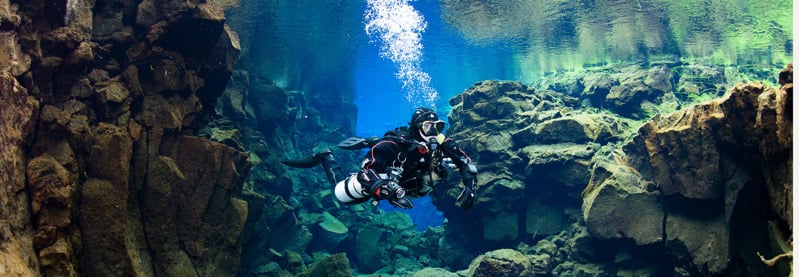
Heinerth publishes children's book
He's a manatee named Chester and he's not in great shape. Meet the star of Jill Heinerth's new children's book. Just published, Chester the Manatee and the Very, Very, Terribly Bad Itch is part of Jill's quest to educate children about the state of our water. Below she tells us about the new book, and why she feels manatees have much to teach us.
So what's the idea behind the book? Chester the Manatee and the Very, Very, Terribly Bad Itch is a book that follows the life of a gentle manatee facing struggles from a very annoying itch. He reaches out to a young girl who helps him discover the cause of his problem. The little girl helps Chester by teaching people about keeping water clean. Chester the Manatee supports children who feel different, embrace their special characteristics. The book celebrates unique kids as remarkable people who help teach others about important issues.
You're quite a fan of manatees right? The book is a part of my efforts to educate people about their water issues. Recently some misguided but well-meaning people started to lobby to end activities that allow people to swim with manatees. Anyone who has had the privilege to swim with manatees is transformed by the experience and there is no evidence to support that any of the wild manatees are harmed. They have special refuge areas to escape and yet they leave the refuges to interact with humanity. I truly believe the manatees are trying to teach us something. None have been harmed by human interaction in the water and yet many die of cold stress each year. Their habitat has been destroyed by our use of herbicides, pesticides and fertilizers on the golf course style lawns we keep in Florida. The bottom vegetation is now gone and replaced by filamentous algae that does not have the nutritional value they require. They have to leave the warmth of the springs to swim out to the Gulf of Mexico to feed. Some don’t make the return trip in time to beat cold weather and henceforth die of cold stress.
I realize that it is critical to help everyone understand that humans’ swimming with manatees are the best chance we have to protect the water they are swimming in. People have to learn from the operators in the area about how to change their behaviors to protect water resources. I hope this book will help.What’s the story about? Beyond the environmental message of protecting water, I want to empower kids. Sometimes we all feel like we are different or that nobody understands us. I am trying to encourage kids to be confident and understand that they can help change the world.What else are you up to right now? I have a busy summer ahead with work in Greece, the Azores, Newfoundland and England. I’ll be doing some filming of caves, wildlife, wrecks, icebergs and a newly opened flooded mine. I’m also looking forward to going back to Cuba soon. I am working with National Geographic on a project that involves an international team of scientists and explorers. We’re looking at early human remains and unique paleontology as well as getting a better understanding of global climate change.
You can order the book on iTunes here.
Top freedivers descend for Suunto Vertical Blue 2015
One breath, a hundred meters into the depths and back again.
That’s the kind of incredible mental and physical mastery you can expect to see between April 27 and May 07 at Suunto Vertical Blue 2015, a free diving competition held in the world's deepest blue hole.
Dean's Blue Hole is 202 m deep. ©zooom.at/ Agustin Munoz
Suunto Vertical Blue is one of the world’s top freediving events where competitors aim to push the boundaries of human aquatic potential, diving vertically for minutes on one breath.
The first of 23 divers from 12 countries take the plunge on April 27, day one of the nine-day competition. They’ll be competing in three disciplines (see below), with some aiming to break world and national records or personal bests.
Japanese freediver Tomoka Fukada is competing again at this year's event. ©Daan Verhoeven
To deepen your understanding on freediving, jump into this article.
Located on Long Island in the Bahamas, the mysterious Dean’s Blue Hole is a postcard perfect tropical cove from above. But past the sandy shores it drops off abruptly, falling 202 m before hitting the sea floor below.
The depth, warmth and clarity of its waters make Dean’s Blue Hole to free diving what Maui is to surfing. It’s a magnet for the best, including multiple record holder William Trubridge who founded the Vertical Blue competition back in 2006.
Event organizer Will Trubridge holds world records for freediving. ©zooom.at/ Samo Vidic
Will Trubridge has won the overall title five years straight and aims to continue his streak. With his main rival Alexey Molchanov not competing this year, there will be less standing in his way.
But with back-to-back competitions in the next few months and world championships in September, Will isn’t promising to break any records this time around.
“I'm just looking to build depth and confidence in this phase of the year,” he says. “If I’m at a level where I feel comfortable going for a world record in one of the disciplines then I will definitely do that.”
Dean's Blue Hole's warm, clear waters attracts the best freedivers. ©zooom.at/ Samo Vidic
For the first time in four years, the event is being held in April to take advantage of favorable spring weather conditions.
“It’s been a while since we’ve competed in Dean’s Blue Hole during spring, when weather and water clarity tend to be better, so I’m looking forward to that,” Will says.
Stay tuned for more updates on Suunto Vertical Blue 2015.
Three disciplines:
Constant weight (CWT): descending and ascending using fins and arms only.
Free immersion (FIM): descending and ascending by pulling on the rope.
Constant no-fins (CNF): considered the purist freediving discipline – descending and ascending without fins or other artificial means.
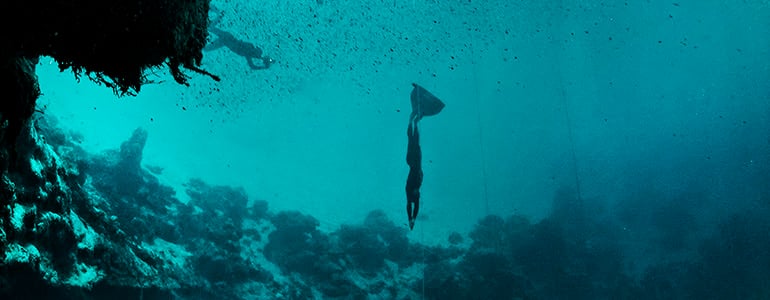
A visual guide to freediving
There are some adventure sports that have only been around for a matter of years, sports like ice-climbing, kiteboarding. Then there are others that have existed for only hundreds of years, like skiing and running. But there's one sport that has been around since the dawn of time itself – freediving.
Humans have been holding their breath and diving in water for thousands of years – to fish, and more recently, to have fun and compete. In fact, humans are so uniquely adapted to going underwater it's possible to argue that we've freediving before we even became human.
What happens during a dive? Check the infographic below:
Graphic: ©zooom.at/Adi Sumic
What are those special attributes that we share with other aquatic beings that make freediving possible? It all comes down to the so-called 'dive reflex'. The main feature of this is the slowing of the heart which automatically occurs once the face is submerged in water. This has the effect of reducing oxygen consumption so you can hold your breath for longer.
The dive reflex kicks in again after approximately 25 m: the heart rate slows by as much as 50% and vasoconstriction takes place. This is where warm blood retreats from the body's extremities to protect core organs. Again, this has the effect of lengthening the time we can spend underwater.
Will Trubridge competing at the 2014 Suunto Vertical Blue ©Daan Verhoeven
At this depth most divers can stop swimming – and just freefall to the depths below. It is this part of the dive that can induce the most pleasant feelings. Many freedivers feel euphoric as they enter an almost trance-like state.
Descent can be as fast as a meter a second so a world class freediver can expect to reach a depth of 100 m after approximately 1m 30s. At this depth lung volume will have shrunk from approximately 6 lt to 500 ml. The ascent is then the most psychologically challenging part of the dive as divers fight the urge to breathe. Stomach contractions kick in. Hallucinations are not uncommon. The most dangerous part of the dive is then the last 10 m to the surface – this is where the pressure difference is at its greatest and O2 supplies at their lowest – and divers are at risk of blacking out.
But it's not just about the depth. Competition diving and its many disciplines are only one aspect of the sport. For most freedivers, the sport is just about hanging out with friends and exploring the underwater world.
Main image ©zooom.at/Agustin Munoz
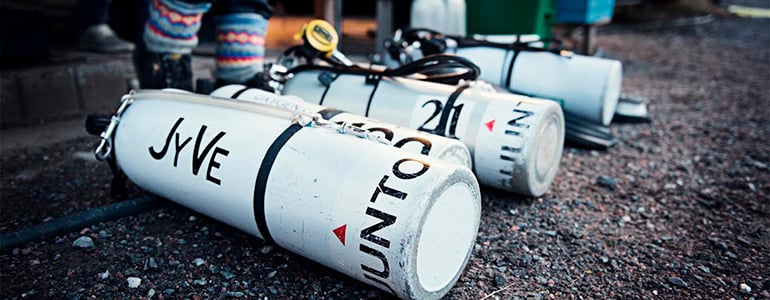
Why tech divers need to know about micro bubbles
Tech diving means going deeper for longer and requires, as the name suggests, a more technical understanding of what's going on with your gases. In this second part on Suunto algorithms, we go deeper into Suunto's RGBM. For technical divers, there are two key reasons Suunto’s Reduced Gradient Bubble Model, or RGBM, algorithm stands out. The first is microbubbles. No other brand of dive computer takes into account the accumulation of inert gases on this level. At any given point, even when you’re on dry land, your veins and arteries have microbubbles filled with these inert gases. When small, they’re of no consequence.
But when they expand from time at depth, they begin to limit off-gassing. The deeper you dive, the greater a risk factor microbubbles potentially become. Suunto’s computers will force you to decrease your ascent rate when microbubbles start to become an issue.
Second, Suunto is the only brand whose computers factor in the risk of isobaric counterdiffusion (ICD), which can potentially occur on ascent. Normally, as you breathe while making your way back to the surface, you’re off-gassing; however, depending on your gas blend, these inert gases could travel further into your system as opposed to out, due to the increasing partial pressures of gases upon ascent. Suunto’s computers will alert you when you’re at risk of ICD, and will alter your ascent plan as necessary to keep you safe.
How does ICD affect divers? Hear Dr Wienke explain below and check out our other video guides to our algorithms here.
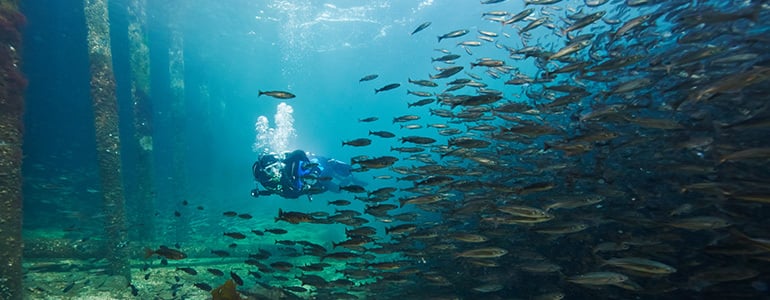
Computer Algorithms Explained
Knowledge is power – and having an understanding of what's going on inside your dive computer will help you dive more safely and with peace of mind. Here's what you need to know on Suunto's algorithm that keeps you safe: Think of dive algorithms as you do the Internet: Few of us can actually explain how email works, but we all agree that life is infinitely better with it. The algorithms powering your dive computer are much the same: You need only appreciate how you benefit. Algorithms are ever-adapting formulas that constantly measure how much nitrogen is accumulating in your body as you remain underwater.
© Janne Suhonen
When you first started diving, relying on the tables was fine because, most likely, your air consumption wasn’t efficient for you to stay down long enough to complicate things. Then, at some point, you noticed everyone with a dive computer was enjoying longer dives. They could duck down a few meters to swim nearer a shark or turtle, and this didn’t significantly shorten that dive or subsequent dives. Simply put, they were carefree. They knew their computers were factoring in these depth changes to keep them safe.
When we dive, inert gases—such as nitrogen, which our body doesn’t need—are dissolving into the bloodstream. At any given point, even when you’re on dry land, your veins and arteries have microbubbles filled with these inert gases. When small, they’re of no consequence. But when they expand, say, from time at depth, they begin to limit off-gassing—that is, your body’s ability to expel nitrogen.Only Suunto factors microbubbles into their algorithms. The deeper you dive, the greater a risk factor they potentially become. Their dive computers will force you to decrease your ascent rate when microbubbles are starting to become an issue.
Suunto’s Reduced Gradient Bubble Model, or RGBM, is the industry’s most accurate representation of what’s happening in your body when you dive. It automatically adjusts to what you’re doing underwater. After you’ve told it you are diving air or a particular Nitrox blend, it requires no further manual input, leaving you free to enjoy your dive.
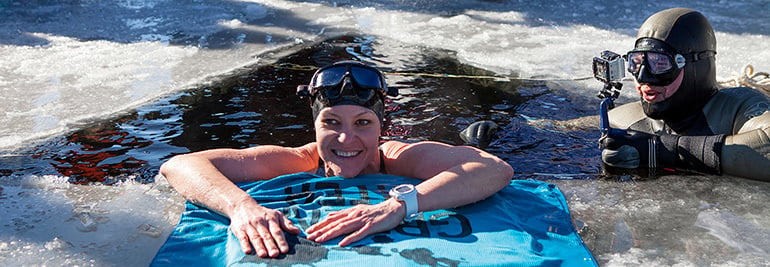
Johanna Nordblad’s 50-meter swim under ice
Finnish freediver Johanna Nordblad made a Guinness World Record Attempt last Saturday at Lake Päijänne in Finland when she swam 50 meters under ice.
The dive team and spectators gathered on the ice on a beautiful sunny day for the record attempt.
The water temperature was 2 degrees Celcius when Johanna swam a distance of 50 meters under the ice from one hole to another. Everything went according to the plan. Nordblad said the dive was easy and that she couldn't be happier.
Nordblad is an experienced freediver who has been competing at the World Championships since 2000. In 2004 she did a World Record in Dynamic with fins, 158 meters. In 2013 in Serbia she swam 192 meters and was on the 7th place.
Cold-water training has been a big part of Johanna Nordblad's training since she broke her leg in downhill mountain biking. Cold water helped in rehabilitation and soon became a big part of her wintertime training in Finland.
Johanna Nordblad is the first woman to swim 50 meters horizontally under ice with no fins and no diving suit. The men's record is held by Stig Severinsen, who dove 76,2 meters under ice in 2013.
Watch a video of Johanna’s dive (part 1).
Learn more about Johanna Nordblad’s dive here
Images: © Elina Manninen
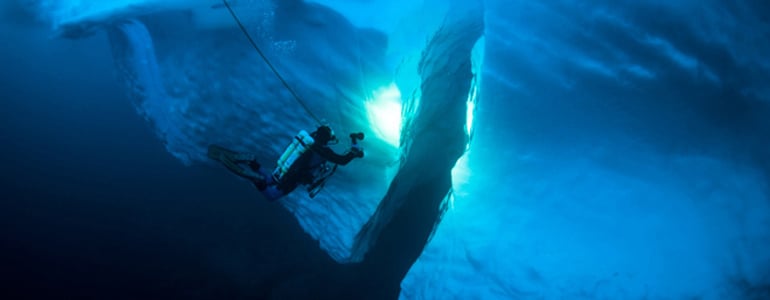
Sea ice at last for the Under the Pole team
The latest update has come in from Greenland, with the Under the Pole team talking diving holes, science and inviting locals to join in on the experience.Under the ice © Lucas Santucci / Under The PoleMuch jubilation was felt amongst the team as after months of waiting they finally have sea ice surrounding them.“The ice is moving, cracking and grinding, northern lights are dancing at night around the Why [the name of their boat] and the dives are splendid, offering visibility down to 60 and 70 meters,” writes expedition leader, Grislain Bardout in his latest newsletter. “Having the boat icebound was a dream. How beautiful she is!”Life is not easy for the crew, however, who work in temperatures falling to -30 degrees C. With ice anything up to 60 cm thick it also freezes the toilet pipes meaning these must be defrosted before every day can begin.Pricila, the chef on the boat gets ready to dive for the first time © Lucas Santucci / Under The PoleThey are making headway on their scientific work, however, Ghislain says: “Science wise, we started the cryosphere program, or interaction between atmosphere, ice and ocean. Part of the boat was transformed into an efficient laboratory. This program is extremely interesting because it provides us with a real database on our environment during the ice season.”There was also a bit of fun to be had at the weekend during a visit to Ikerasak with the diving equipment to allow inhabitants to discover the undersea world. “All together we shared this event and, in spite of our languages and cultural differences, the diving hole was surrounded all day long by thirty persons or more. Twelve of them dared to immerse and went to see under the ice, although they didn’t even know how to swim,” adds Ghislain.The team also plans to invite hunters and children from the Uummannaq Home to join them on the ice.Main image: © Lucas Santucci / Under The Pole
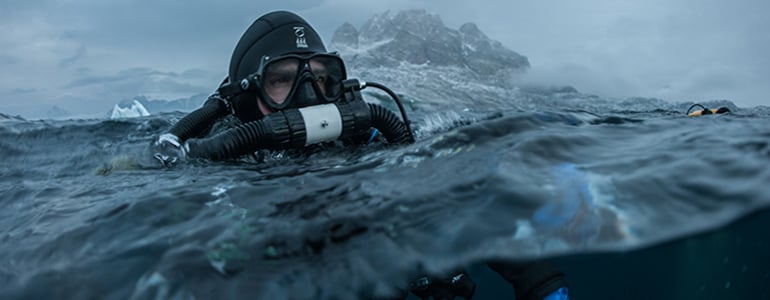
Surviving Northern Nights Under the Pole
As the Under the Pole team journey up Greenland’s coast they battle through howling storms and fast-freezing seas, but it’s all worth it for the spectacular scenes above and below the ice. Click the video below to see for yourself:
Winter has truly visited Greenland, where a group of French explorers and scientists have been sailing up the west coast. After battling through a 14 hour storm – complete with mini icebergs bashing against the side of the boat – and spending New Year in the harbor town of Uummannaq, the team continue up the coast until the ice becomes too thick to sail any further.
After two days of waiting, the sea around their boat freezes enough to walk and sled across, much to the joy of Kayak, the team’s Siberian husky. But the real reward comes after dark, when the team are able to dive under the ice itself, and get to witness the northern lights flickering behind the WHY (the team’s yacht). “We’ve only just started to explore but still we had so much fun,” says Ghislain Bardout, expedition chief. “Then to come out and see the northern lights and the “WHY”, I think is as nice as the dive itself.”
The Under The Pole team has also released an educational video on the northern lights (Aurora Borealis), which you can view here.
Turns out it’s not caused by the spirits of the dead playing soccer with a walrus skull…
Main image: © Lucas Santucci / Under The Pole
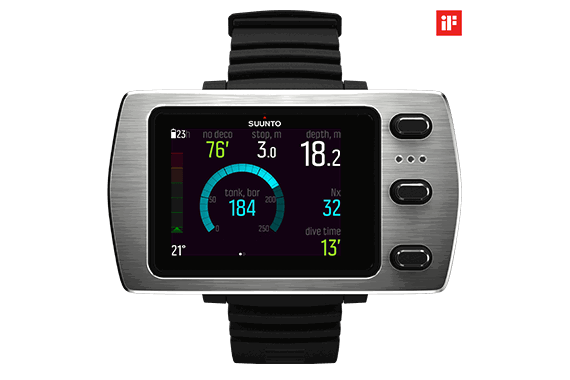
Suunto EON Steel wins prestigious award
Suunto’s next generation dive computer receives global iF Design Award 2015
Suunto is pleased to announce that Suunto EON Steel, the fully customizable dive computer, has been awarded the iF Design Award 2015 in the Product category. This award is an important recognition of the Finnish company's success in developing diving innovations in the last 50 years.
Handmade in Finland, Suunto EON Steel combines advanced technology with a bright color screen and customizability to let you choose exactly what you want to see on your dive. The easy-to-use dive computer was developed in close relationship with active divers around the world. It has been extensively tested including dives in the caves of an old limestone mine in Ojamo, Finland. Creating reliable products designed for the harshest of elements has been a part of Suunto’s heritage for almost 80 years.
Comments Björn Bornemann, the Designer of Suunto EON Steel: “We’re thrilled to receive this prestigious award which is a fitting tribute to the hard work of the whole product team. With heavy-duty housing, a stainless steel bezel, and user updatable software, Suunto EON Steel is built to last.”
The iF Product Design Award was introduced in 1954 and is a highly prized seal of quality annually conferred by the International Forum. Every year the iF attracts more than 2,000 product entries from around 37 nations, which are judged by renowned experts. www.ifdesign.de
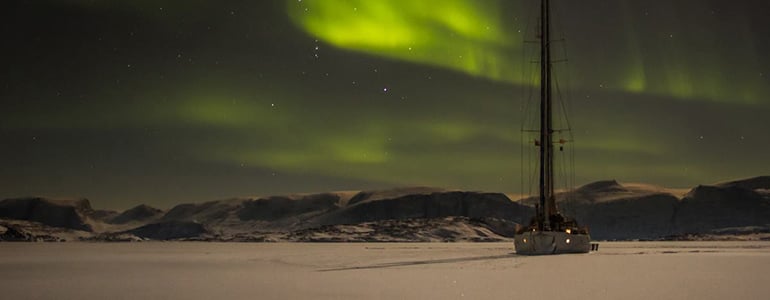
Patience Under The Pole
In their latest update from Greenland, the Under the Pole team share their adventures, which included violent Arctic winds, and a memorable Christmas party.“We say that the Arctic is the school of patience,” writes expedition leader, Ghislain Bardout in his latest newsletter. “It takes us 20 minutes of preparation to get out the boat, one hour to remove the snow from the deck every morning, four hours to prepare a scuba dive, and we haven’t seen the sun in four months.”
This is a day in the life of Ghislain Bardout and his team of French explorers, as they wait patiently for spring to arrive and continue their ambitious scientific expedition off the Greenland coastline.
Diving base camp next to the iceberg. © Lucas Santucci / Under The Pole
He says: “While we waited for the sea-ice and sun to come out, we had some great Christmas parties at Uummannaq. And New Year’s Eve was one of the best we’d ever experienced: locals launched hundreds of fireworks into the sky – it became a magical show above the snowy city.”The team then headed to their winter location and had a three-day stopover at Ikerasak to lend the locals a hand. “Véronique, our physician, examined several local people, and Sylvain, our fixit man, repaired the local school’s informatics network.” Ghislain says.January proved to be a difficult month for the team, as they endured several days of violent Arctic winds, halting all activity. “We registered averages of 50 knots and gusts up to 80 knots. It’s in these kind of situations that we’re happy to have two anchors!” adds Ghislain. The team is now planning for the next leg of their exhibition – the sea-ice scientific program.Under The Pole is a series of submarine polar expeditions aiming to explore the hidden face of the Arctic and Antarctic Polar Regions in their diversities. Suunto is an expedition partner.
Main image ©Under The Pole
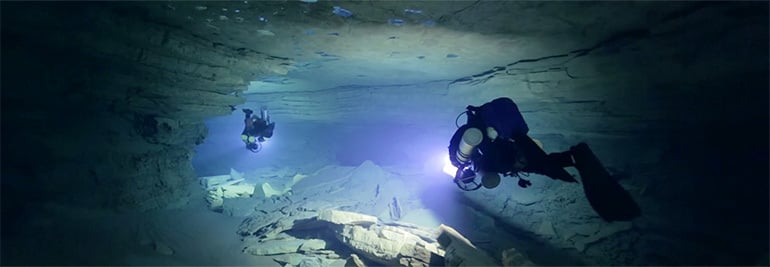
Uncompromised test diving
There are a lot of similarities between cave diving and developing a new product. Pushing the limits is one of them. Explore the world of a cave diver, tech dive instructor and Suunto EON Steel test diver Sami Paakkarinen.
Sami Paakkarinen was one of the field testers that supported Suunto's internal test team in the development of EON Steel, our new fully customizable dive computer.
Paakkarinen is an advanced dive instructor who teaches technical, cave and rebreather diving. He is based in Finland but can be found diving all around the world in places like Plura in Norway, Pozo Azul in Spain and Orda in Russia.
In this video filmed by the Divers of the dark Sami introduces us to the world of cave diving – and finds similarities between cave diving and developing a new dive computer.
“Big projects take years and years of preparation. Only then you are ready to push the limits,” he says.
Explore the world of cave diver, tech dive instructor and Suunto EON Steel test diver Sami Paakkarinen.
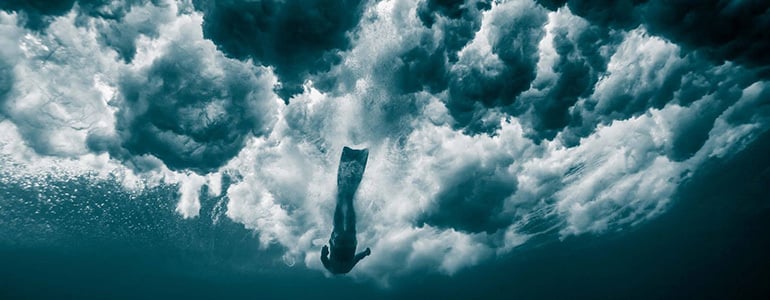
Exploring unchartered waters in the Maldives
Like any successful diving trip, the moment you get home it suddenly feels a long time ago. But the memories from Suunto's exploratory trip to Ayada Maldives look set to remain for a while yet for the lucky winners who joined us on our photoshoot earlier this month.The trip explored diving sites that have yet to be dived in the beautifully warm and clear waters of the Indian Ocean island chain. Five Suunto fans were able to join after winning our #Paradise contest. They were not disappointed... Says Jen Weston: “The trip really was a dream come true – exquisite, easy-going diving with professionals in a gorgeous underwater environment.“The diving locations had great visibility, lots of beautiful coral, countless tropical fish all contributing to an environment bursting with color. The dive sites near Ayada were clean and well cared for. And the night dive was truly amazing. We saw a nurse shark, a sleeping pufferfish, crabs, and lobster.” Jen Weston taking a shot © Phil Davison“It was described as a trip to paradise,” adds fellow contest winner Mark Harris, “and I really don’t think I can describe it any better than that. “The diving was beautiful – there were large expanses of pristine hard coral reefs at most of the dive sites and most of the reefs we visited had very mild currents. Sightings of Eagle Rays were a daily occurrence with regular sightings of reef sharks, large rays and turtles.” Also on the trip were the Scuba Diver Girls. “There is something for everyone in the Maldives, from big animals to small macro life. You constantly find yourself not knowing what to look at first,” says Margo Sanchez. “Every divesite was teaming with fish, eels, and wonderful anenomies!...and then a spotted eagle ray or black tip reef shark swims by...”Flying in the ocean: ©Dapeng Juan
She adds: “It was so amazing to wake up early, throw on a bikini, enter the water right from the deck of our bungalow, and snorkel the spectacular house reef.”There was one particularly memorable diving moment, she says: “Stephanie and I were on a dive over a pretty reef that dropped off in a sheer wall of coral to the deep. There was the perfect amount of current to where you floated along just fast enough to be able to stop and take pictures if you wished. We found the cutest turtle that really seemed to like us and swam with us for quite sometime. The team on the beach of Ayada Maldives resort. ©Brad Holland“Then we came upon a very large nurse shark under a ledge of coral that was obviously very pregnant. She turned her head and regarded us as if to say hello but was very comfortable in her bed. Although that dive was quite amazing, the most stand-out moment for us was the baby blacktip sharks that were 30 feet from our bungalow. We snorkeled with them daily and I could always hear Stephanie squeeling through her snorkel...CUUUUUUTE!!! I, of course, was making the same noises. Some days the larger sharks would come in to check us out as well and all of this was in 3 feet of water!!!” Everyone got the chance to dive with Suunto's new dive computer, Suunto EON Steel and photographers George Karbus and Predrag Vuckovic were on hand to capture some great images for our forthcoming campaigns and we look forward to sharing those images in the coming weeks. Thanks to everyone for making it such a memorable trip.
Main image ©Steve Woods




























































